Technologies
My iOS 17 Wishlist: Every New Feature I Want to See at WWDC
Apple’s annual developers conference is today. Hopefully these iPhone features make an appearance.
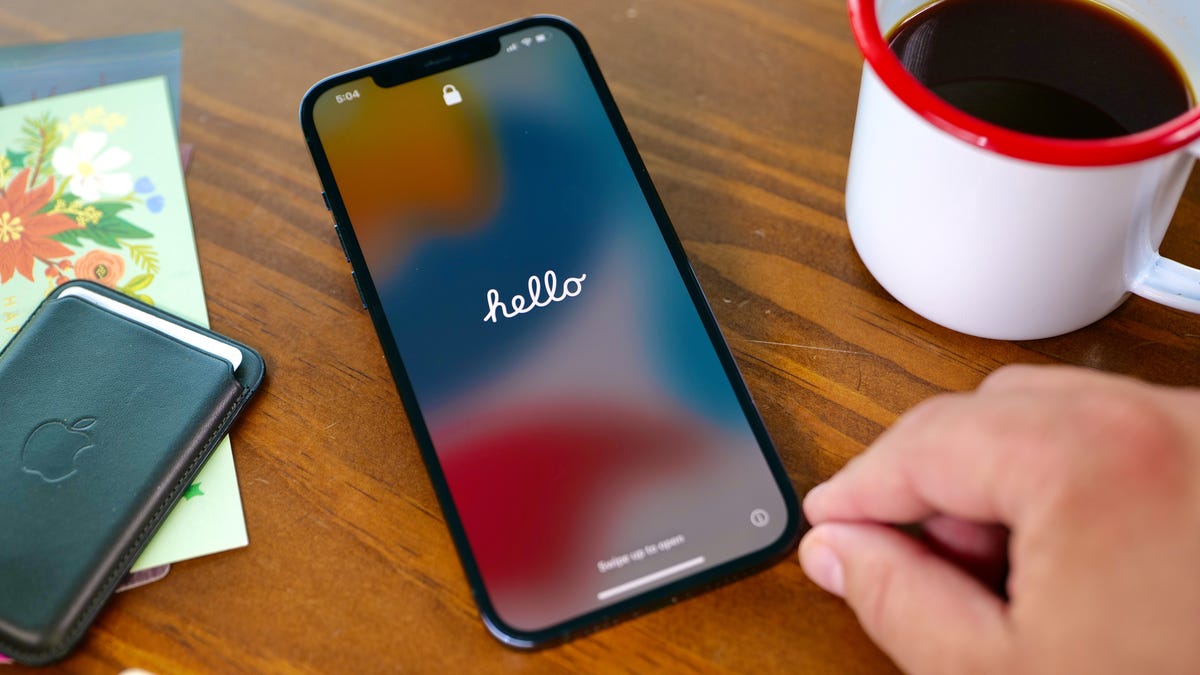
Today is the day. Apple is set to hold its Worldwide Developers Conference keynote presentation on Monday, in which CEO Tim Cook and gang are expected to announce the next major version of iPhone software, iOS 17. Though rumors point to the software update being overshadowed by new Mac hardware and a long-rumored and yet-to-be-announced AR/VR headset, the next version of iOS should still boast significant improvements.
It could include a feature that lets you view more items on your lock screen, according to a Bloomberg report. The lock screen would reportedly show calendar appointments, weather and notifications, similar to Android devices circa 2019 and smart displays like the Amazon Echo Show. This would follow on the heels of iOS 16, which brought a major overhaul of the iPhone’s lock screen that made it more customizable.
With iOS 17, iPhone owners could also gain the ability to sideload apps, according to a different Bloomberg report. Sideloading means you can download an app on your iPhone without using Apple’s App Store. The potential inclusion is likely meant to ensure compliance with new European regulations due to kick in next year.
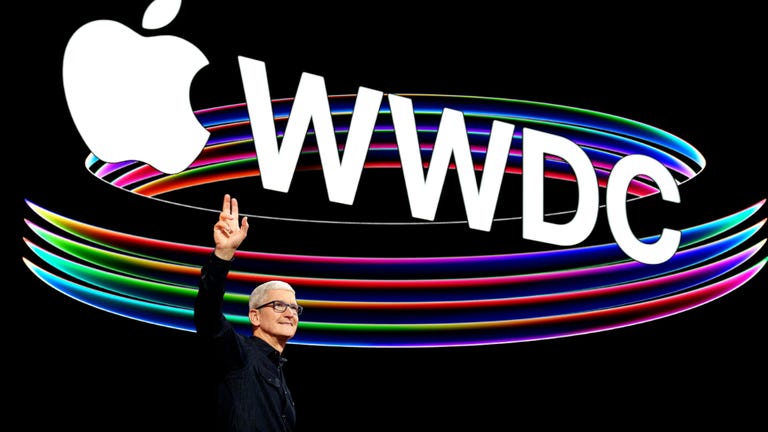
08:03
While I find those rumors fun to ponder, they can also be a distraction from the many other things I think Apple needs to add or improve in iOS. The additions I want range from significant changes, like adding support for the Apple Pencil for Pro Max and Plus models, to smaller, quality-of-life improvements, like adding a volume button to the iPhone’s virtual Apple TV remote. We have to wait until WWDC kicks off later today to see what actually unfolds, but here’s my iOS 17 wish list.
Bring ‘Visual Look Up’ to the Camera app

In iOS 16, Visual Look Up got a nifty shortcut that lets you cut out the subject of a photo just by tapping and holding on the image.
Visual Look Up launched with iOS 15 in 2021 and can recognize objects in your photos such as plants, food, landmarks and pets. In iOS 16, Visual Look Up expanded to let you lift an object out of a photo or PDF by tapping and holding, essentially creating a sticker you can share with others.
But there’s a catch. Visual Look Up works only after you take a photo. I hope iOS 17 lets you do the same thing straight from the camera viewfinder. For example, if the camera were open and pointed at flowers, I could tap the Visual Look Up icon to see what kind of flowers they were without taking a photo of them. You can do that with Live Text, and Google Lens does something similar on Android phones. I realize this isn’t a radical change, but it would streamline things a bit.
Add a volume button to the iPhone’s Apple TV remote

Sometimes you lose this little guy and need to use your iPhone to control your Apple TV.
If you own an Apple TV, you’ve no doubt misplaced the tiny minimalist aluminum remote control at some point. Fortunately, you can use a virtual remote on your iPhone to do nearly everything the physical Siri remote does, except change the volume. Apple, please add a volume button to the iPhone’s Apple TV remote.
Technically, when you use the Apple TV remote on your iPhone, you can press the physical volume buttons to control the TV volume. But this doesn’t work on every TV’s audio receiver, such as mine. I’d guess there are many people who, like me, just want the virtual remote on the iPhone’s screen to mimic the physical remote’s button layout; most importantly including the button for volume.
Bring fitness tracking to the iPhone
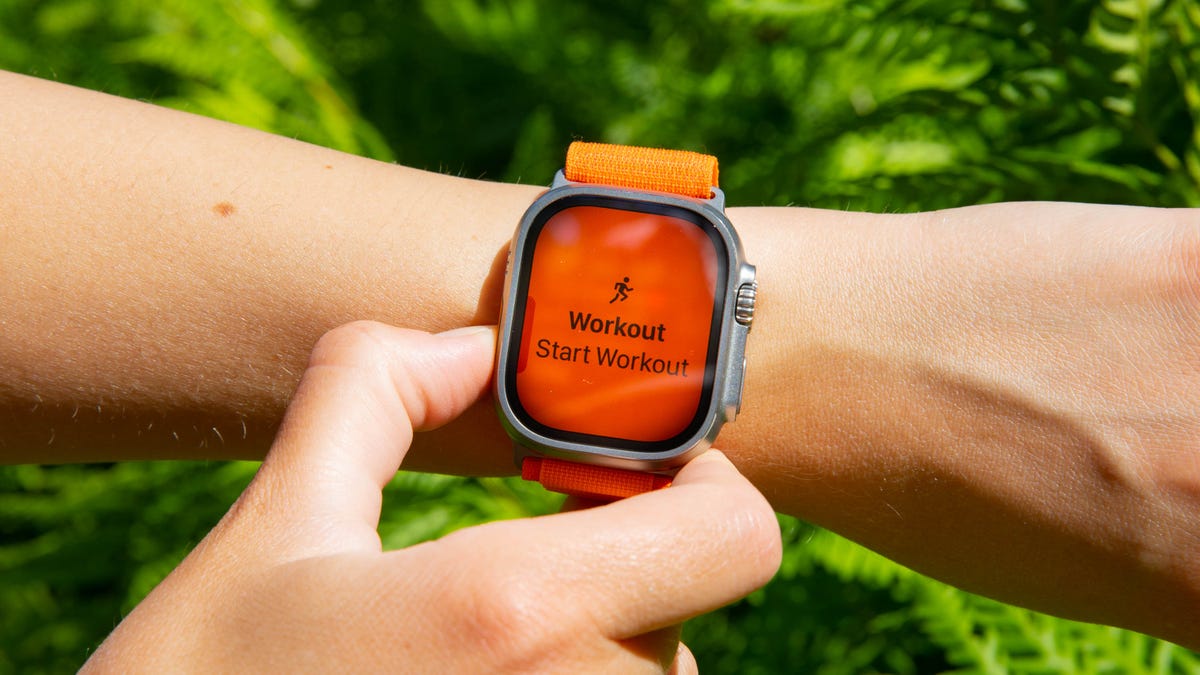
You can start workouts from your Apple Watch, but not from your iPhone (without a third-party app).
If you’re an Apple Watch user, you understand the convenience of recording a workout. But if you aren’t wearing your watch or don’t own one, there isn’t a way to record basic exercises like walking, running or cycling without a third-party app. I’d like to see Apple expand the Fitness app so you can record workouts even without a Fitness Plus membership.
Add a pro camera app
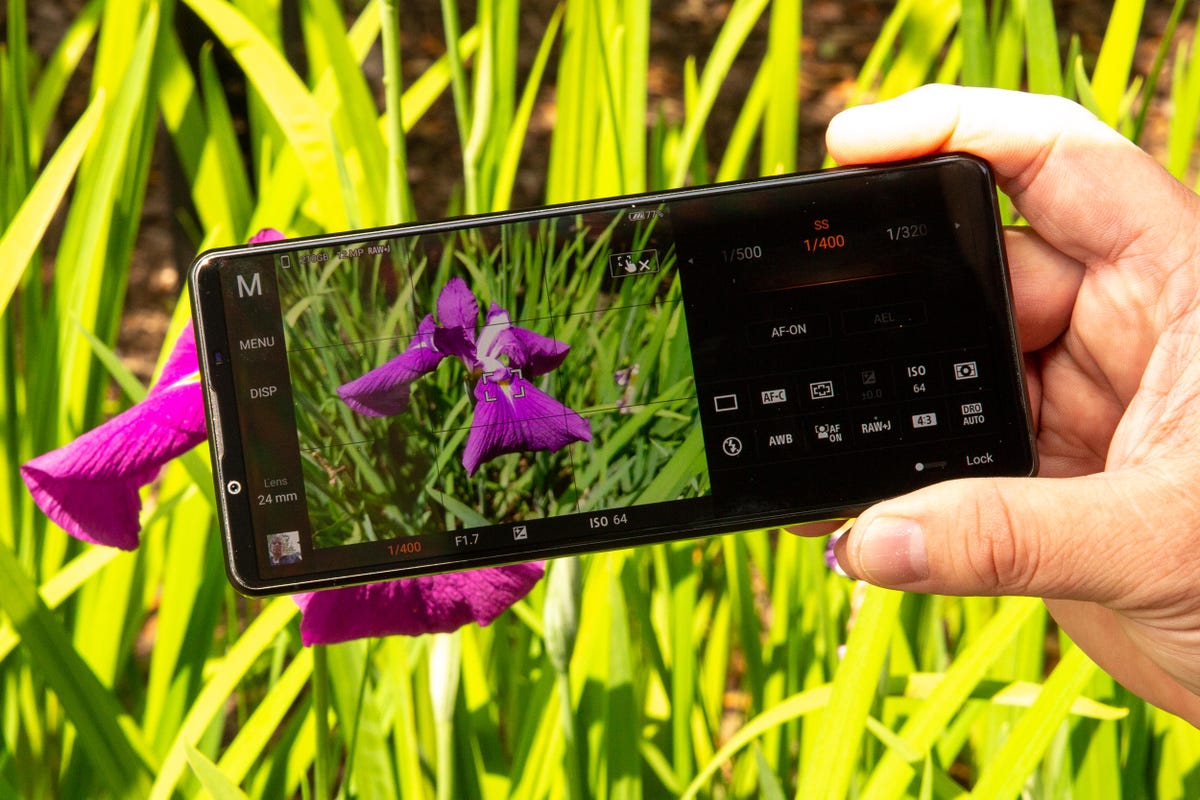
The Photo Pro app on Sony Xperia 1 and 5 series phones gives you an interface that looks identical to a professional mirrorless camera.
It’s time for Apple to revisit the iPhone’s Camera app. For years, it was the gold standard of simplicity, offering a «see what you get» preview for photos, videos and effects with minimal, easy-to-navigate controls and modes. But as Apple has added more functionality, especially for ProRaw photos and ProRes video recording on iPhone Pro models, the Camera app has started to feel cramped. It tries to remain a one-size-fits-all app at the expense of higher-end features like manual camera controls.
I’d like Apple to make a separate pro camera app, along the lines of how it created a standalone app for classical music. Apple Music Classical tackles the special challenge of categorizing, searching for, and discovering classical music, something the default Apple Music app isn’t geared toward. Similarly, the pro camera app could be a place for creative types to access camera controls, settings and features beyond those in the basic camera app. Sony has been quite successful with this sort of approach in its Xperia 1 and 5 series phones, and Samsung has a separate Expert Raw app to complement its main one. Now it’s Apple’s turn.
Let me customize the Dynamic Island
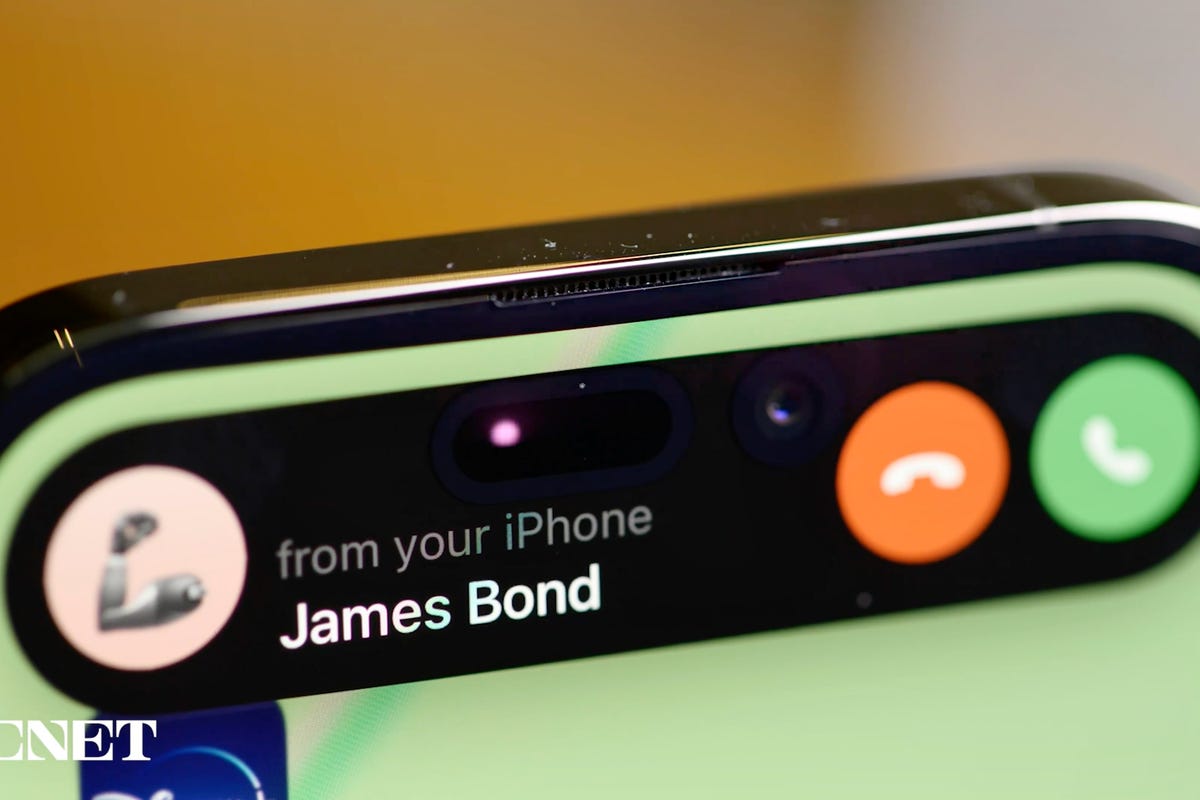
The Dynamic Island was a great addition to the iPhone 14 Pro and 14 Pro Max.
The Dynamic Island works well. It’s like having a shortcut at the top of your screen no matter what you’re doing on your iPhone. Glancing at my Uber ride status from my lock screen or in the Dynamic Island just makes sense. But I want more from the Dynamic Island, especially if iPhone 15 rumors are right and non-Pro iPhone models get it too. I’d like to see Apple let people customize their own Dynamic Island in a curated way.
In 2016, with iOS 10, Apple rolled out the iMessage app store for stickers and games. I don’t think we need a Dynamic Island app store, but something like the ability to pin a Memoji sticker as a Dynamic Island icon would be great. Admittedly, as creative-minded as I am, I don’t have a brilliant example of exactly what I want. I just think the Dynamic Island is another way people could make their iPhone feel more personal. Customization was a big theme with Android this year at Google I/O, with the introduction of AI and cinematic wallpapers. Of course, Apple could view the Dynamic Island like it does Apple Watch faces and want to control how it’s changed, instead of letting people go hog wild.
Add Apple Card functionality to other credit cards
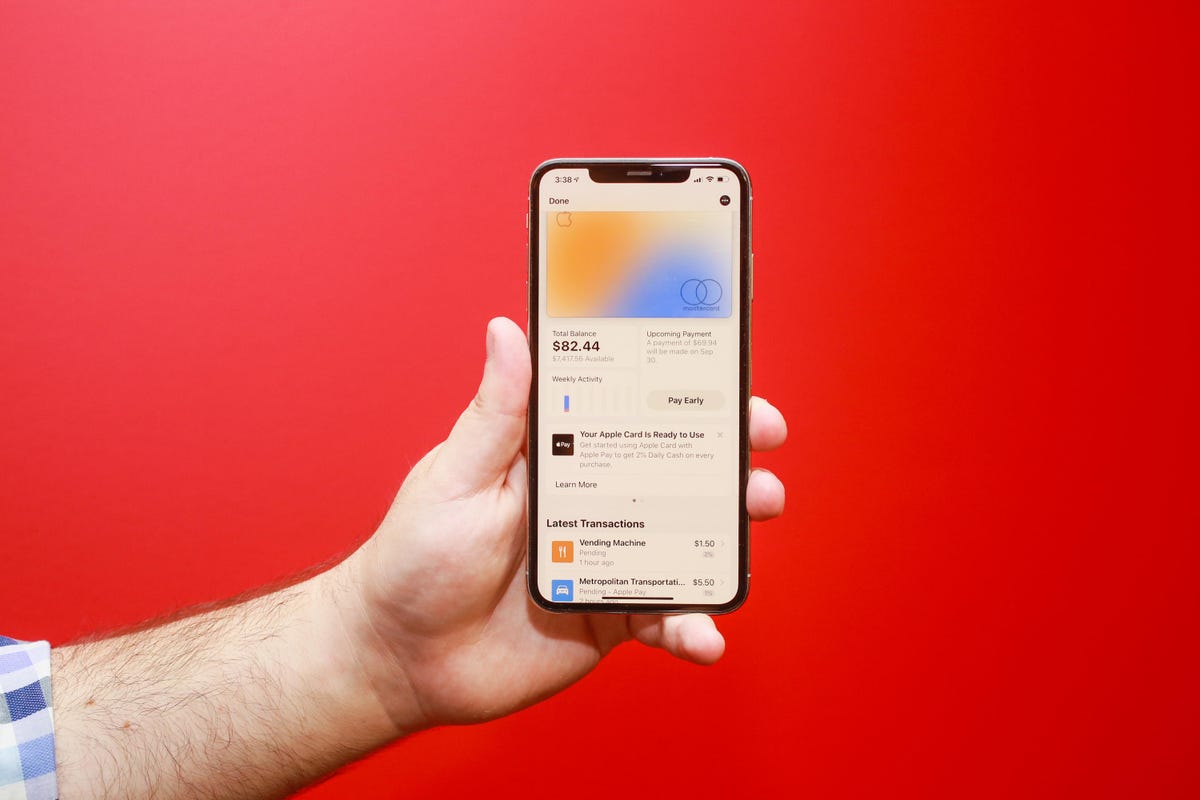
The Apple Card lives on your iPhone.
If you have an Apple Card, you get to experience one of the best mobile financial experiences on any phone today. Apple’s signature credit card lives virtually in the Wallet app. At first glance, it appears like any other Apple Pay card. But when you tap its digital avatar, you see the card’s balance, rewards, upcoming payment info, and transactions. I’d like Apple to open that functionality to non-Apple credit cards.
If your Bank of America credit card is in Apple Pay and you have the Bank of America app on your phone, wouldn’t it be great to access similar functionality in the Wallet app? Expanding access would be convenient for iPhone owners and could bolster Apple Pay and the iPhone’s Wallet as serious financial tools.
Make widgets interactive
Widgets can be pinned to your home screen and resized to your liking.
Widgets on the lock screen and home screen can do two things: show information (like the weather) and launch the corresponding app when tapped (e.g., the weather app). Widgets haven’t changed much since Apple introduced them with iOS 14. It’s time for a refresh.
What if you could use the podcast widget like a mini-podcast player, or order your favorite burrito bowl straight from Chipotle’s widget? Adding more functionality to widgets could make it easier to multitask on the iPhone.
Add Apple Pencil support
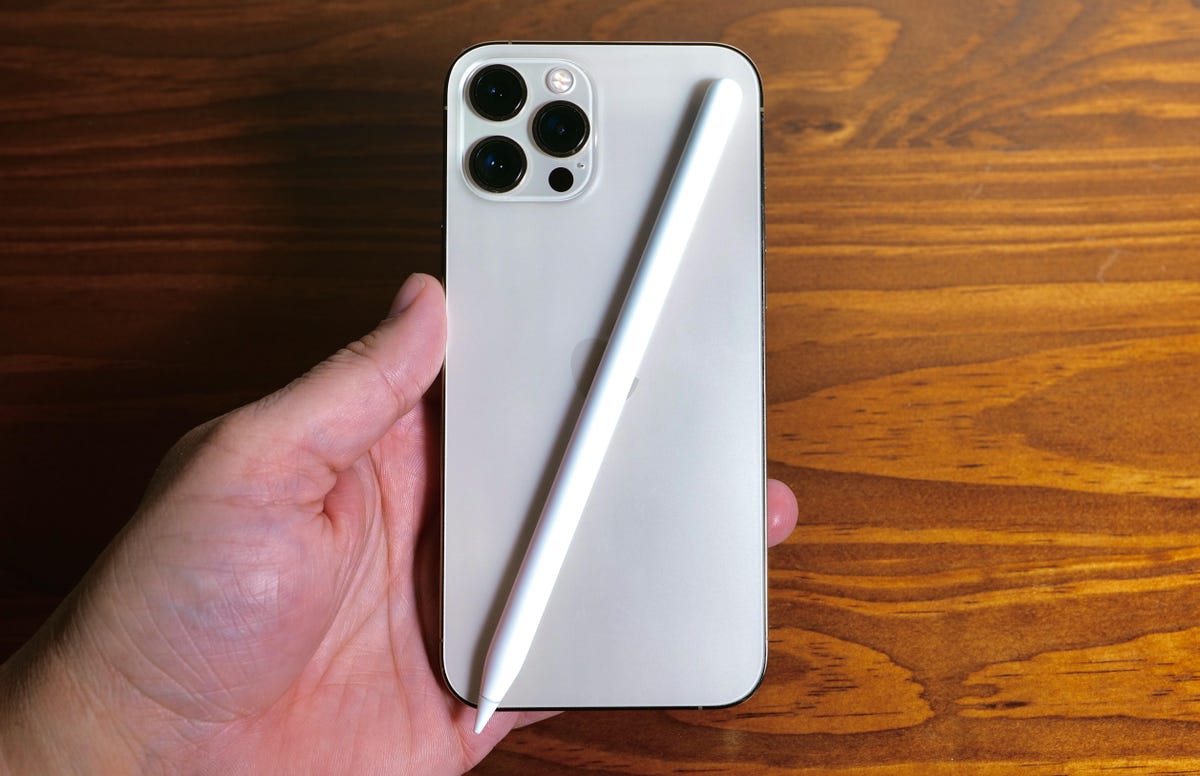
What if you could use an Apple Pencil on the iPhone?
I’ve been writing iPhone and iOS wish lists for years, and one addition that’s made my roundup every time is adding Apple Pencil support to the iPhone, specifically for Pro Max and Plus models. The 6.7-inch screen isn’t that much smaller than the 8.3-inch screen on the iPad Mini. But one supports Apple Pencil functionality and the other doesn’t.
Also, if iOS 17 did include Pencil support, Apple could make a smaller version of its stylus and call it the Apple Pencil Mini. Maybe it could attach to the back of the iPhone Pro Max or Plus using MagSafe?
Bring the iPad’s split-screen view to iPhone Pro Max models
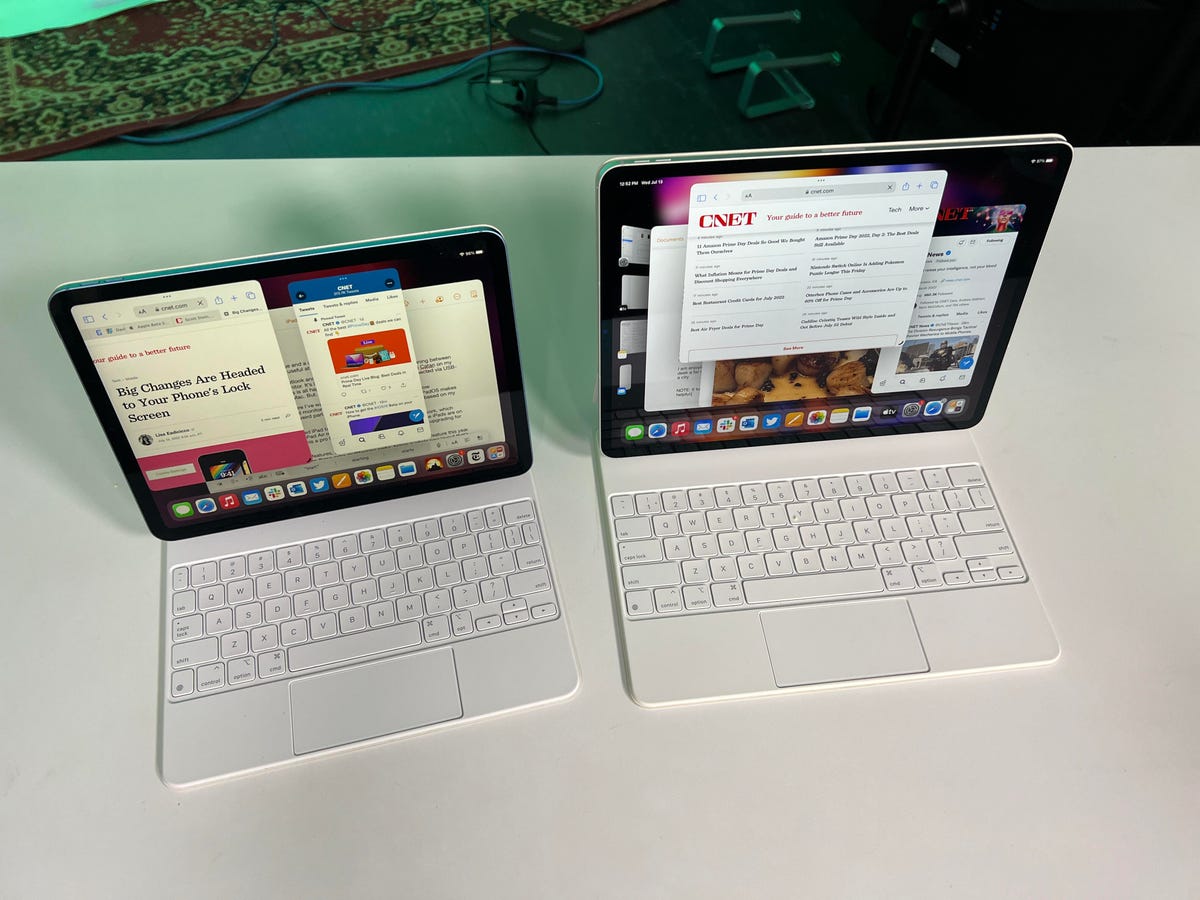
The multiple windows on the iPad and iPad Pro.
The iPhone Pro Max has been part of Apple’s lineup since 2019. The 11 Pro Max has a 6.5-inch screen, while the 12 Pro Max, 13 Pro Max and 14 Pro Max all have a 6.7-inch display. Last year, Apple introduced the iPhone 14 Plus, which also has a 6.7-inch screen. Those large screens feel wasted when it comes to software. Some iOS apps like Mail and Messages can take advantage of the extra space in landscape orientation to show a column of message previews next to the currently opened message. But otherwise, there isn’t much else in iOS that’s optimized for big iPhone screens.
I’d like Apple to bring some iPadOS features to iOS 17 just for Pro Max and Plus models, especially its split screen multitasking view. It would be wonderful to have Safari open on one side of the phone and launch Messages on the other.
Revisit ease of use vs. security
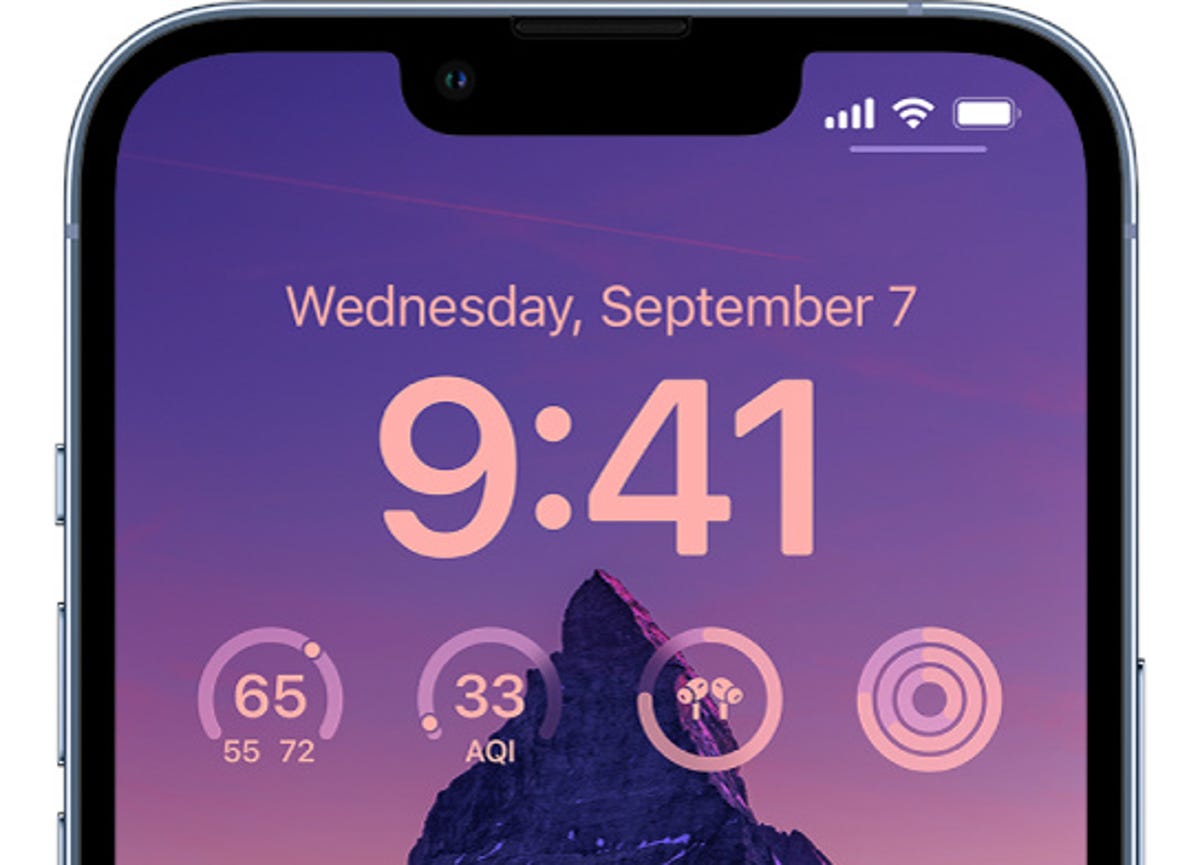
Some iPhone owners are being targeted for an unusual crime.
Earlier this year, The Wall Street Journal’s Joanna Stern and Nicole Nguyen ran a series of stories about how a thief who steals your iPhone and knows its passcode can lock you out of the most important parts of your digital life. This crime isn’t widespread, but Stern and Nguyen showed that it’s more common than you might think.
At the core of the issue is the balance between security and ease of access. The same tools Apple put in place to help people who get locked out of their devices and accounts are being used by savvy criminals to lock people out of their phone and accounts while gaining access to their money and services. There’s been a bunch of coverage on the topic in recent months, and it sounds like these tools help far more people than the criminals who take advantage of them.
I don’t think there’s an easy way for Apple to «fix» the issue, but I hope with iOS 17, the company takes a moment to reconsider the impact these tools can have on people and even offer other security features to foil the thieves behind these crimes, like Apple did with AirTags.
At the end of the day, I’m excited for WWDC this year. And while I do hope there’s a fancy, cool AR/VR headset, my heart is holding out for iOS 17 and all its new features.
Technologies
Today’s NYT Connections Hints, Answers and Help for Nov. 25, #898
Here are some hints and the answers for the NYT Connections puzzle for Nov. 25, #898

Looking for the most recent Connections answers? Click here for today’s Connections hints, as well as our daily answers and hints for The New York Times Mini Crossword, Wordle, Connections: Sports Edition and Strands puzzles.
Today’s Connections: Sports Edition is both fun and tricky. Think colors, and see if you can find items that share the same color. The purple category wants you to look within four words and find a connecting word hidden in them. If you’re struggling with today’s puzzle but still want to solve it, read on for hints and the answers.
The Times now has a Connections Bot, like the one for Wordle. Go there after you play to receive a numeric score and to have the program analyze your answers. Players who are registered with the Times Games section can now nerd out by following their progress, including the number of puzzles completed, win rate, number of times they nabbed a perfect score and their win streak.
Read more: Hints, Tips and Strategies to Help You Win at NYT Connections Every Time
Hints for today’s Connections groups
Here are four hints for the groupings in today’s Connections puzzle, ranked from the easiest yellow group to the tough (and sometimes bizarre) purple group.
Yellow group hint: Not big.
Green group hint: These things are the same color.
Blue group hint: Itchy!
Purple group hint: They all share words that are positive.
Answers for today’s Connections groups
Yellow group: Small-time.
Green group: Things that are pink.
Blue group: Things you can scratch.
Purple group: Starting with optimistic words.
Read more: Wordle Cheat Sheet: Here Are the Most Popular Letters Used in English Words
What are today’s Connections answers?
The yellow words in today’s Connections
The theme is small-time. The four answers are Mickey Mouse, rinky-dink, trivial and two-bit.
The green words in today’s Connections
The theme is things that are pink. The four answers are Barbie Dreamhouse, calamine lotion, cherry blossom and flamingo.
The blue words in today’s Connections
The theme is things you can scratch. The four answers are bug bite, lottery ticket, vinyl record and your head.
The purple words in today’s Connections
The theme is starting with optimistic words. The four answers are glad-hand, Happy Meal, merry-go-round and sunny-side up.
Technologies
I’m Buying These Headphones for My Gamer Thanks to This Deep Black Friday Discount
SteelSeries headphones are among the top gaming headsets on the market and right now you can score them for as much as half off ahead of Black Friday.

Ready or not, Black Friday is just about here. And Black Friday deals are already popping up on the regular.Here at CNET, we offer our services as dedicated deal finders, scouring the market to curate the best offers for you. We recently spotted some of our favorite gaming headsets on sale at Amazon, some of them for more than half off. We don’t know if these prices will last all the way to Black Friday itself, so if you see something you like, we suggest grabbing it sooner rather than later.
Right now, several SteelSeries’ most popular gaming headsets are seeing nice discounts. I’ve highlighted some of the best offers below, including the ones in my own cart right now, but be sure to check out the Amazon page to see all the options.
First up, the headset in my cart right now as as a holiday gift for my discerning teenage son is the SteelSeries Arctis Nova 3x wireless gaming headset, currently down to just $90, a $20 savings. Arctis Nova 3x comes in blue, black or white and is compatible with Xbox, PC, PS5, Switch and mobile and has a whopping 40-hour battery life. They are lightweight and have a stretchy headband for added comfort.
If you want to go pro, check out the SteelSeries Arctis Nova Pro wireless headset, down to $290 from $380. That’s nearly $100 off a multi-platform compatible headset good for Xbox, Switch, PS5, PS4, PC and mobile. This headset was our sibling site, PCMag’s top pick for best overall gaming headphones. It boasts active noise cancellation, 360-degree spatial audio and a ClearCast Gen 2 mic. Only the black variant is currently on sale at this big of a discount.
Essentially a more affordable version of the above, the Arctis Nova Pro wired headset for Xbox is down to $150, which is $100 off the regular price of $250. This one also got PCMag’s seal of approval for best wired gaming headphones.
Buyers should note that a few of the headsets on sale are renewed, so be sure to double check before buying. We’ve also rounded up the best Black Friday headphone deals if you’re in the market for something for an audiophile near you.
CHEAP GAMING LAPTOP DEALS OF THE WEEK
-
$900 (save $300)
Why this deal matters
Gaming headphones come in a wide range of styles and price points, but the best ones factor in three key components: sound quality, battery life and comfort — those all-night gaming sessions pretty much demand it. Over the years, we’ve tested a ton of brands, and SteelSeries frequently comes out on top, especially for PC and Xbox users. Being able to pick up a pair at a discount makes it a great opportunity to gift or grab a new headset that delivers on comfort, sound and quality.
Join Our Daily Deals Text Group!
Get hand-picked deals from CNET shopping experts straight to your phone.
By signing up, you confirm you are 16+ and agree to receive recurring marketing messages at the phone number provided. Consent is not a condition of purchase. Reply STOP to unsubscribe. Msg & data rates may apply. View our Privacy Policy and Terms of Use.
Technologies
Oura’s CEO Has Some Chill Advice for Avoiding Health-Tracking Anxiety
For the leading smart ring maker, «calm tech» seems to be the winning strategy.
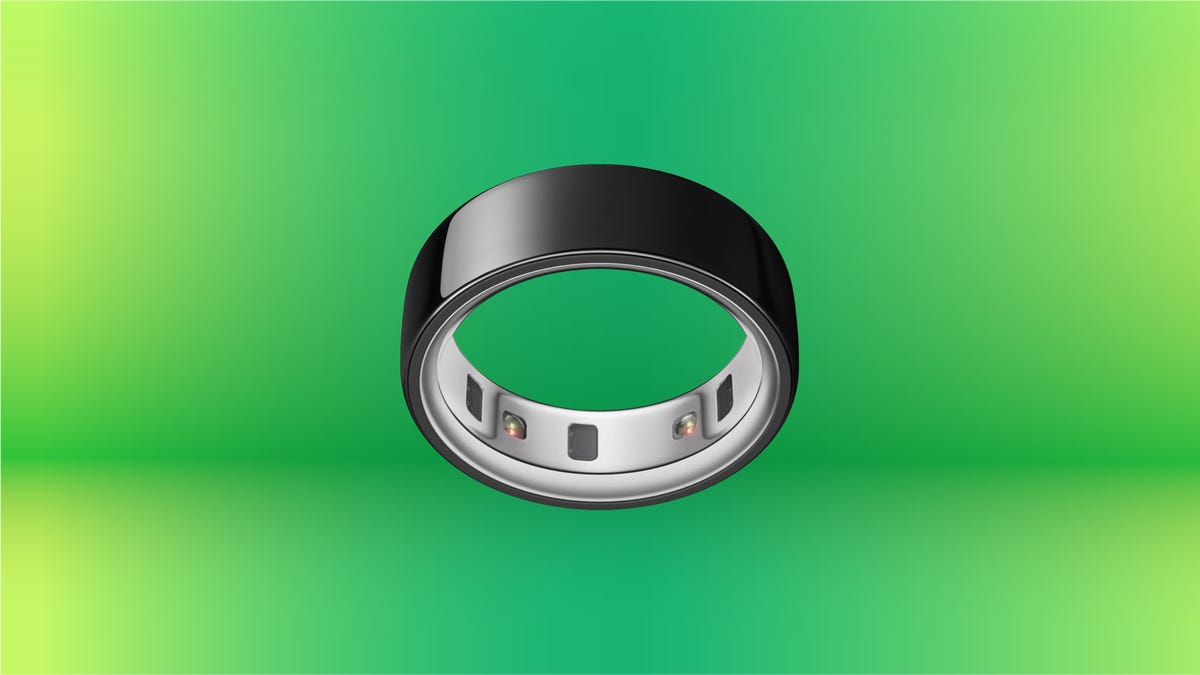
When I sit down with Oura’s CEO, Tom Hale, in a quiet wooden booth on the outskirts of the Web Summit technology conference in Lisbon, I notice that he’s wearing two smart rings. Is he conducting competitor analysis? No, it turns out. Both of the rings are his own company’s devices.
One, he explains, is his personal ring, which contains all his data from the past four years. The second is linked to his beta account and shows him what’s coming in the next software update.
For Hale, wearing two rings that run two sets of software allows him to be plugged into every minuscule variation in data. This type of hyperfocus, essential for his job with the world’s leading smart ring maker, enables him to understand the ever-evolving experience of Oura customers before they do.
But being on high alert is not what he wants for the rest of us. Quite the opposite, in fact.
«Our philosophy very much is about being in the background,» says Hale. «We think of ourselves as calm tech.»
Don’t miss any of our unbiased tech content and lab-based reviews. Add CNET as a preferred Google source.
Calm tech is a departure from the majority of other wearable devices on the market, and it seems to be resonating. Over the past year, smart rings, which primarily measure activity and sleep, have surged in popularity, with sales more than doubling to 1.8 million units in 2024, and expected to hit around 4 million units this year, according to Omdia.
Many of us are choosing them over the best fitness trackers. Smart rings accounted for 75% of all fitness tracker revenue in the US this year, up from 46% the previous year, according to Circana.
Unlike standard fitness trackers, smart rings can’t provide real-time feedback, stats and coaching on your wrist. Instead, they record and synthesize your activity and sleep data for viewing on your phone at a later time. That’s enough for most people. The trade-off is especially worth it for those of us who want to nurture a less anxious attachment style to our personal tech and prioritize a real-world focus.
The majority of other wearables on the market aren’t conducive to this «passive» relationship. Smartwatches — and, for the most part, smart glasses — are body-worn screens, contributing to the ever-increasing and omnipresent information overload that tech subjects us to.
Easing health tech anxiety
Smart rings are, by their very nature, screen-free devices, and Oura wants to keep it that way. The Oura Ring 4 doesn’t include any flashing lights and indicators (it does have LEDs on the inside for measuring heart rate and blood oxygen). That decision was geared toward maintaining peace of mind, according to Hale.
«A lot of the most engaging and demanding applications are ones notifying you and creating anxiety where it doesn’t need to be there,» he says. «‘Oh, your heart rate’s elevated. You’re dying.’ Who needs that message? I don’t need that message.»
I don’t need it either. I’m far from alone in feeling that unfettered health tracking can quickly descend into an anxiety-inducing nightmare that causes more harm than good. Obsessing over not getting enough sleep has been known to induce insomnia. Intensive calorie tracking can cause people to disregard their bodies’ signals and ignore hunger cues.
This, Hale tells me, is what Oura strives to avoid. When the company introduced meal tracking into its app earlier this year, it was careful about how it framed the feedback, focusing on «gentle» advice.
The feature allows you to upload a picture of your food and input a brief description, before it’s scanned by AI and given a rating: nutritious, good, fair or limited. I raise my eyebrow at the inclusion of «good» as a rating. It could read as assigning a moral value to the food you’ve eaten. But Oura chose not to include a «bad» rating, which takes some of the sting out of it.
Oura also tries to steer people away from focusing on assigning a numerical value to their food, «which I think lends itself to sort of obsessive behaviors,» says Hale. You can see caloric intake if you wish, but Oura also offers a switch to let you turn off any mention of calories.
«For some people, counting calories is really triggering,» says Hale. «We try to be very sensitive to that, because we don’t want to create an unhealthy relationship with it, and we don’t want to shame people.»
For Oura customers to get the most out of their ring and subscription, Hale’s No. 1 tip is not to put too much value on a single health metric, but instead to take a holistic approach to the information to guide their actions. (Oura provides data on 40 different activities under its $6/£6 per month fee. By contrast, the Samsung Ring offers more limited tracking, free of charge.)
Hale says the company is not focused on measuring bodies. «We’re in the behavior-change business,» he says.
In the case of food, this might work by observing how your body reacts to what you’re eating and then examining how that reaction intersects with other factors, such as whether you’re rested, stressed or have exercised earlier that day.
Hale shows me a picture of the Portuguese flan he’d eaten the night before while in Lisbon. «Shocker,» he says, «look at my blood sugar spike.»
There’s nothing wrong with having the flan — it certainly doesn’t seem to have subdued Hale, who is animated and full of energy throughout our conversation. But seeing the impact of a rich, sugar-heavy meal late in the evening after a busy day at a tech event might help you understand how you feel, or even nudge you into eating differently the next day to balance things out.
‘It’s going to be OK’
Oura’s goal is to build context around why your body might be behaving a certain way, and increasingly, provide personalized, generative AI support via an LLM-powered chatbot that you can talk to about injuries and offer tailored advice. This, too, can help relieve any stress you might be feeling about your health, says Hale.
«One of the things that we try to do is strike a supportive tone in the AI, to kind of be like: ‘You had a bad night’s sleep, but it’s going to be OK.'» he says.
The AI Oura Advisor, which the company launched in summer 2024, can prompt the kind of behavior change Hale wants for Oura customers, such as suggesting you take a walk after a heavy meal to aid digestion. It even takes into account one frequently overlooked element of long-term health — social connection — and will prompt you to spend time with friends and family.
Over the past few years, there has been an explosion in longevity culture, with people investing money in products and services, like supplements and wellness services, that promise to extend their life and health spans.
The «moral hazard» of these products, says Hale, is that there’s no accountability. «If it works, great,» he says. «If it doesn’t work, you’re not gonna call me. You know why? Because you’re dead.»
Oura doesn’t exclude itself entirely from the conversation around longevity. Back in May, it released an ad that Hale calls «cheeky,» featuring older adults wearing Oura rings and living their best lives. But it didn’t promise we’d all become centenarians.
«Our premise is not: Hey, buy our supplement because you want to live forever,» says Hale. «Our premise is: Change your behavior today to make healthy choices, because then you’ll live a better life.»
It’s a convincing pitch, which might explain why Oura surpassed 5.5 million total rings sold back in September, putting it on track to hit $1 billion in revenue for the first time this year. According to the latest stats shared by the International Data Corporation, published in 2024, the company boasted an 80% market share.
Last month, the company scored a «decisive victory» in a patent infringement lawsuit against two of its competitors, Ringconn and Ultrahuman. So when Hale tells me he doesn’t test rivals’ rings «as much as he used to» because they’re «copying us,» I know it’s more than bravado.
Thanks to its intellectual property and growing troves of health data that enable it to refine its software, Oura has a clear competitive advantage in this rapidly growing market.
«I’m looking not for other things that other people are doing,» Hale says. «I’m looking for the stuff that we should do that’s really innovative.»
Disclosure: Katie Collins traveled to Lisbon as a guest of Web Summit to serve as a panel moderator. Her reporting from the event was independent of that role.
-

 Technologies3 года ago
Technologies3 года agoTech Companies Need to Be Held Accountable for Security, Experts Say
-

 Technologies3 года ago
Technologies3 года agoBest Handheld Game Console in 2023
-

 Technologies3 года ago
Technologies3 года agoTighten Up Your VR Game With the Best Head Straps for Quest 2
-

 Technologies4 года ago
Technologies4 года agoBlack Friday 2021: The best deals on TVs, headphones, kitchenware, and more
-

 Technologies4 года ago
Technologies4 года agoVerum, Wickr and Threema: next generation secured messengers
-

 Technologies4 года ago
Technologies4 года agoGoogle to require vaccinations as Silicon Valley rethinks return-to-office policies
-

 Technologies4 года ago
Technologies4 года agoOlivia Harlan Dekker for Verum Messenger
-

 Technologies4 года ago
Technologies4 года agoiPhone 13 event: How to watch Apple’s big announcement tomorrow
